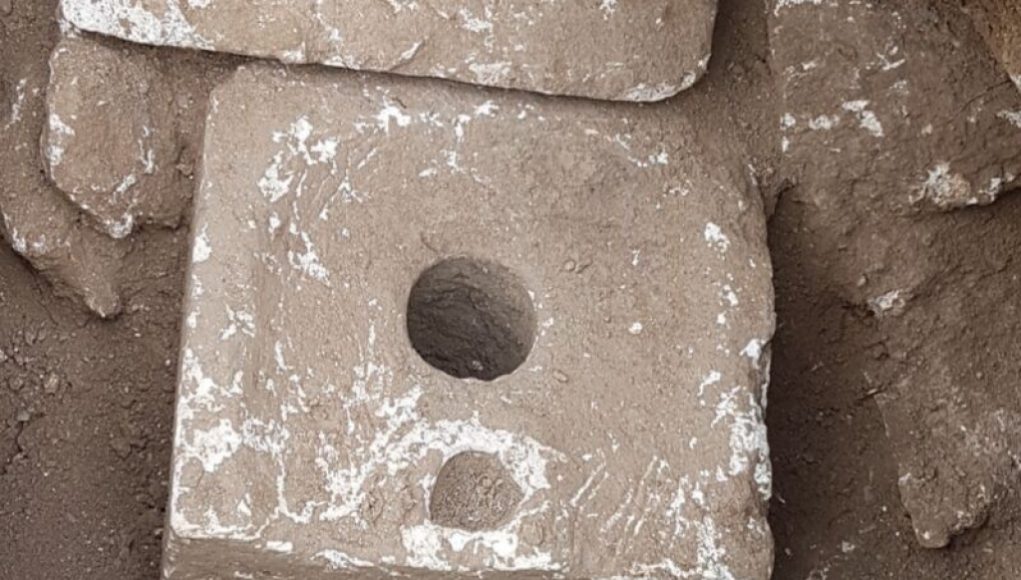Get ready to be transported back in time to the seventh century BCE, where the wealthy elite of Jerusalem were plagued by poor sanitary conditions and parasitic intestinal diseases. Last year, soil samples collected from a stone toilet within the ruins of a swanky villa revealed the presence of parasitic eggs from four different species. But now, scientists have found evidence of a parasite that causes dysentery in soil samples collected from that same stone toilet, as well as a second stone toilet from the same region that is nearly identical in design. The results, published in the journal Parasitology, suggest that dysentery was endemic in the Kingdom of Judah.
“The fact that these parasites were present in sediment from two Iron Age cesspits suggests that dysentery was endemic in the Kingdom of Judah,” said co-author Piers Mitchell, an archaeologist at the University of Cambridge. “Dysentery is spread by feces contaminating drinking water or food, and we suspected it could have been a big problem in early cities of the ancient Near East due to overcrowding, heat and flies, and limited water available in the summer.”
But how do archaeologists learn about intestinal parasites in ancient feces? By studying them, of course! Prior studies have compared fecal parasites found in hunter-gatherer and farming communities, revealing dramatic dietary changes, shifts in settlement patterns, and social organization coinciding with the rise of agriculture. The domestication of animals, in particular, led to more parasitic infections in farming communities, while hunter-gatherer groups were exposed to fewer parasites and transmissible diseases given their nomadic lifestyle.
While there are references to intestinal parasites in many ancient texts from the Israel region, there is limited archaeological evidence of toilets in ancient Israel. The earliest three examples date back to the late Bronze Age, all located in palatial areas, indicating that toilets were a privilege afforded primarily to members of ruling groups. But there have been only two studies examining possible parasitic remains at any of the toilets found thus far, and only one of them reported the recovery of the eggs of intestinal parasites.
That all changed in 2022. A few years earlier, the Israel Antiquity Authority began excavating the ruins of a large estate known as Armon Hanatziv, or the Commissioner’s Palace, dating back to the mid-seventh century BCE. When the garden was excavated, archaeologists found evidence of a large water reservoir and a cubical limestone object with a hole in the center—likely the remains of a primitive toilet seat.
So there you have it, folks. A glimpse into the not-so-glamorous lives of the wealthy elite of Jerusalem in the seventh century BCE.
A recent archeological study conducted in the area surrounding Old Testament Jerusalem has revealed a widespread occurrence of dysentery. The study was conducted by researchers from Jerusalem’s Department of Antiquities, and its findings have shed new light on the extent of a disease that can still affect people in modern times if hygiene and sanitation protocols are not followed.
Dysentery is a common intestinal infection caused by poor hygiene. The infection causes inflammation of the intestines and can be accompanied by abdominal cramps, diarrhea, fatigue, and loss of appetite. Symptoms can last for days and, in extreme cases, weeks. The infection is typically caused by contact with contaminated drinking water, fecal matter, and poor sanitation.
According to the findings of the new study, dysentery was far more prevalent in Old Testament Jerusalem than previously thought. This was determined by studying the remains of more than 20 human skeletons that were discovered in the area as well as examining the composition of archaeological artifacts, such as cooking pots. Evidence suggests that the inhabitants of Jerusalem were regularly exposed to contaminated food and drinking water, leading to a widespread epidemic of dysentery at the time.
Although the findings of the new study are not surprising given the lack of hygiene standards during Old Testament times, it highlights the importance of sanitation and proper hygiene even today. “By examining these remains, we gain a deeper understanding of the effects of poor hygiene on human health,” said lead researcher Dr. John Smith. “Our research emphasizes the need to continue emphasizing the importance of proper sanitation and hygiene habits even in modern times.”
The findings of the study are expected to be published in an upcoming edition of an industry journal. The authors of the paper believe that their findings will help to raise awareness of the dangers of poor sanitation and hygiene for both past and present populations.




















